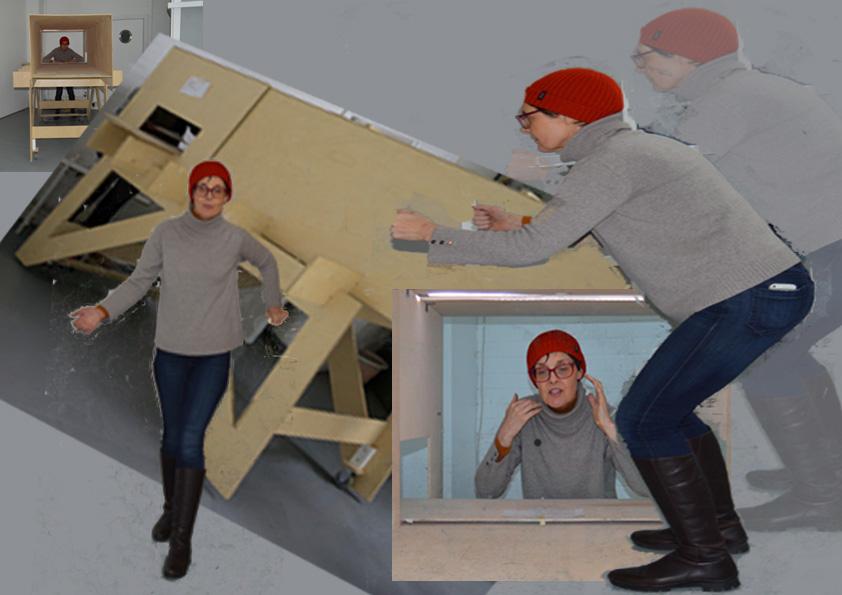This digital collage of Deathbed Skiing shows me talking into, walking and standing alongside one of the Showroom Korean ‘machines’ that underpinned ‘Dawn Breaks’ (the ‘story bus’). The words I said are here.
When my dad was so near death that he’d stopped talking, he got out of his bed.
People that close to death don’t get out of bed! But my strong dad stood up as if he was skiing.
The nurse shouted at me – she said he might fall and hurt himself. She seemed to have forgotten he was in the hospice because he was dying. She definitely didn’t know he was Deathbed Skiing.
You hear of people dying in someone else’s arms, but my dad skied in my arms.

From the art point of view, this image draws on traditional flattened, multi-focus Islamic ‘perspective’.
Multi-focus perspective, in my view, can tell much more of a story than vanishing point perspective.
You can see an example of that (to the left) in this Ottoman painting of Szigetvar siege.
I’d like to point out that it was Islamic theories of optics that spurred Europeans in the Renaissance towards their ‘new’ idea of vanishing-point perspective. And that the Muslims declined to use ‘Western perspective’ for several hundred years. Obviously, they liked their own methods! But that ‘victory’ was as equivocal as that in Szigetvar. The Ottomans conquered the fortress there and the defenders were wiped out. But this was the last battle of Suleiman the Magnificent, and it delayed the advancement of the mighty Ottomans for a hundred years.
Check out the image and story from before this – of how my dad and I talked about his last skiing Black Run(1). Afterwards comes the images and stories of my dad’s last heartbeat (3); and from when I washed his body (4).
